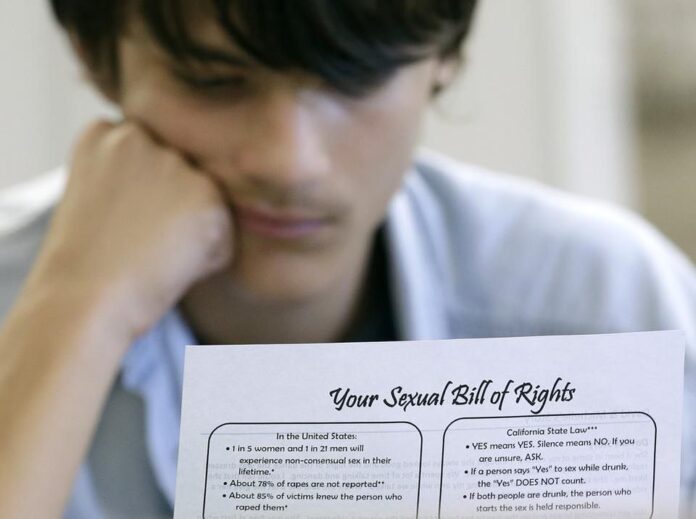By Emily Willingham
Published on Forbes
Dec 23, 2015
And without fail, a large proportion of my students have limited to no real understanding of what I’m teaching when I begin. They answer questions about the effects of hormonal birth control and reproductive anatomy with mythology instead of facts. They will argue with misinformation they’ve learned in their “sex education” classes from high school or, sometimes, church. They frequently look like deer in the headlights.
Most of my students come into college knowing little about their own reproductive systems and how to plan their reproductive and sex lives in informed, evidence-based ways. And the latest findings of a U.S. Centers for Disease Control and Prevention (CDC) report indicate that my experience isn’t an anomaly: Our young people are not getting the information they need about their bodies and their behaviors to best manage their decisions and their risks.
The CDC recommends 16 topics that curricula should address for middle-school and high-school students. Based on their findings, only about half of U.S. high schools and a fifth of U.S. middle schools manage to teach all 16.
According to the CDC, the topic selection criterion is foremost based on evidence that helps young people avoid risk. Yet in some states—Arizona, you’re one of them—only 20% of high schools teach all 16 of these topics, and in most states, fewer than half of high schools do so. Middle school education is even more dire, with Arizona clocking in at 4% for covering the complete curriculum and no state teaching more than half of the recommended subject areas.
To which I say, here’s a reality check in this study’s first table, showing by-state rates of middle schoolers who have ever had sex. In some regions in 2009, one in five sixth-graders reported ever having had sex, with that number nearing a peak of 42% for eight graders in some areas. These values make clear that things haven’t changed much since my own time in a Texas public middle school in the 1970s.
In the meantime, the CDC says that the proportion of all teens who have ever had sex hovers around 60%, with more than a fifth acknowledging use of drugs or alcohol the last time they did so. If that doesn’t identify these young people as a population in need of evidence-based risk prevention education, I don’t know what does.
Al Jazeera homed in on Alabama as a case study in what’s undermining the ability of our young people to access the information they need to make risk-reducing, informed decisions about sex. The article, by Ashley Cleek, cites Alabama’s dismal numbers on STDs (Montgomery, the capital, is number one in the nation for STD rates) and the fact that even though 50% of the state’s high school students report having had sex (per the CDC), half of them have done so without using a condom.
The CDC notes that how to get and use a condom was the least-taught of the 16 subject areas on their curriculum list. Yet teens are less likely today than a decade ago to use a condom, suggesting that the educational gap has consequences.
Some people see teens and young adults as reckless and irresponsible, in thrall to their hormones and needing to be pressured magically into abstinence, an approach that isn’t even effective when the penalty for a lapse is public shaming or death. But I see it as the height of irresponsibility on the part of allegedly mature older adults to withhold from young people the tools they need to mitigate the risks of our most biologically compelling behaviors.
References: https://www.forbes.com/sites/emilywillingham/2015/12/23/yes-we-fail-when-it-comes-to-sex-education-in-the-us/?sh=3b535fa7b229
Comment: Many students came to college without proper sex education, the risk includes unexpected pregnancy, STDs, shaming, even death. While 50% of students reported having sex in high school, half of them have done so without using a condom. The lacking of basic knowledges not only result in physical and psychological impacts, but also makes it harder to start the conversation when the students are older.





Hi Sherry, I appreciate the points you bring up in your comment. I think another statistic that is surprising is how proper condom use is the least taught of the 16 points identified by the CDC for Sex Ed. Then it is noted how we have seen a rise in lack of condom use. Its certainly clear these empty spaces in the Sex Ed system are having negative consequences.